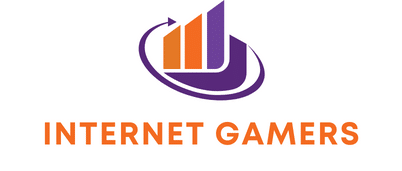What Innovations Are There in Energy-Harvesting Wearables for Sports and Fitness?

The world of sport and fitness is in a continuous state of evolution. From the tools that athletes use to train, the methods they employ to recover, to the way we monitor and measure performance, innovation is always at the forefront. One area that has seen significant growth in recent years is the market for energy-harvesting wearables. These devices, powered by sensors and cutting-edge technology, are not only transforming the way we understand health and fitness, but also changing how we think about energy use and efficiency.
The Advent of Smart Wearable Technology
The integration of smart technology and wearable devices has brought about a new era in sports and fitness. These devices, often worn on the body, utilize a range of sensors to gather data about the user’s health, fitness levels and performance.
A lire également : How Are Digital Twins Being Used in Advanced Manufacturing for Product Lifecycle Management?
Recent advances in technology have led to the development of wearables that are capable of not just collecting data, but also harvesting energy. Energy-harvesting wearables harness power from various sources, such as body heat or movement, to fuel their operations. This represents a significant shift in the power dynamics of wearable devices, potentially eliminating the need for battery-based systems.
The growing popularity of these devices is largely due to their convenience and the unique insights they offer. By providing real-time data about a user’s performance, they enable athletes and fitness enthusiasts to optimize their training routines and monitor their progress in ways not previously possible. Additionally, the energy-harvesting capabilities of these wearables offer a sustainable alternative to conventional power sources, presenting a solution to one of the greatest challenges faced by the wearable technology industry: battery life.
A voir aussi : How Can Voice Activation Improve Safety in UK Smart Home Appliances?
Impact of Energy-Harvesting Wearables on Health Monitoring
The increased ubiquity of smart wearables in the health and fitness sector is a testament to their effectiveness in monitoring a user’s well-being. Traditional health monitoring systems, like heart rate monitors, have been enhanced and miniaturized into wearable devices, making them more user-friendly and convenient.
Energy-harvesting wearables add another layer to this sophisticated health monitoring ecosystem. By drawing power from the wearer’s body, these devices can function indefinitely without the need for frequent charging or battery replacement. This provides users with uninterrupted health monitoring, thereby providing more reliable and comprehensive data.
These devices use sensors to collect data on a variety of health parameters, such as heart rate, body temperature, sleep patterns, and physical activity levels. This constant stream of data not only helps users monitor their fitness levels and performance, but also aids in the early detection of potential health issues. The advent of energy-harvesting wearables has undoubtedly played a pivotal role in revolutionizing health monitoring.
Role of Sensors and Data in Energy-Harvesting Wearables
The key components of energy-harvesting wearables are the sensors that they employ. These sophisticated pieces of technology are responsible for both the data gathering and energy harvesting capabilities of the devices.
At the heart of these devices, sensors collect and measure a multitude of data points from the wearer. This could include heart rate, muscle activity, movement speed, and even the user’s gait. Advanced algorithms then analyze this data to provide insights into the user’s performance, health and fitness levels.
Simultaneously, these sensors also capture energy from the body or the surrounding environment. This can be in the form of thermal energy, mechanical vibrations, or even light energy. The harvested energy is then used to power the device, eliminating the need for a conventional battery.
Future of Energy-Harvesting Wearables in Sports and Fitness
As the market for energy-harvesting wearables continues to grow, we can expect to see further innovations in this field. These devices will likely become even more efficient at energy harvesting and offer increasingly detailed insights into our health and fitness.
We will also see a wider variety of wearables, as they become integrated into different types of sports gear and clothing. This expansion will make the benefits of these devices available to an even broader audience, from professional athletes to fitness enthusiasts, and even individuals with specific health monitoring needs.
As the world becomes more conscious of energy use and sustainability, the appeal of energy-harvesting wearables will only increase. By harnessing power from our bodies and the environment, these devices offer a promising solution to the energy demands of wearable technology. Their potential to transform the sports and fitness landscape is immense, and the next few years will undoubtedly bring even more exciting developments in this field.
Building Efficient Energy-Harvesting Systems: The Role of Solar Cells and Smart Clothing
Several key innovations have helped shape the future of energy-harvesting wearables. Firstly, the use of solar cells has revolutionized the scope of power sources for wearables. These miniature solar panels are capable of capturing sunlight and converting it into usable energy. This makes them an efficient and reliable source of power, especially for outdoor sports activities. With the advent of transparent and flexible solar cells, integrating these into wearable devices and clothing has become increasingly feasible.
Furthermore, the development of smart clothing has pushed the boundaries of wearable technology. This evolution in the sports industry involves embedding wearable sensors and devices directly into clothing items. These "smart" garments can monitor a range of physiological and performance parameters, such as heart rate, muscle activity, and movement patterns, in real-time.
Unlock Company, a pioneer in the field of smart clothing, has made strides in integrating energy-harvesting mechanisms into their sportswear range. Their innovative design exploits the user’s body heat and motion energy to power the embedded wearable sensors, thereby eliminating power consumption concerns regarding battery life.
Such advancements in solar cells and smart clothing not only boost the efficiency of energy-harvesting systems but also enhance user convenience and comfort. This seamless integration of technology into everyday clothing promises an exciting future for energy-harvesting wearables.
Energy-Harvesting Wearables: A Game Changer in the Sports Industry
The impact of energy-harvesting wearables goes beyond individual fitness enthusiasts and athletes. It has the potential to reshape the entire sports industry. Professional sports teams and coaches are increasingly relying on wearable tech to monitor player performance, recovery, and health parameters.
These devices provide real-time data that can be instrumental in making strategic decisions, such as modifying training regimens or game tactics. Furthermore, the sustainability aspect of energy-harvesting wearables aligns with the growing trend in the sports industry towards eco-friendly practices.
As validated in numerous studies found on Google Scholar, the use of wearable technology can significantly enhance athletic performance while reducing injury risk. This scientific backing further solidifies the position of energy-harvesting wearables within the sports fitness realm.
From a commercial perspective, the growing popularity of these devices creates lucrative opportunities for companies in the sports and tech sectors. Innovation in wearable technology is not just about creating superior products; it’s also about understanding and catering to the evolving needs of the modern consumer.
Conclusion: The Bright Future Ahead for Energy-Harvesting Wearables
The landscape of sports and fitness is ever-changing, and energy-harvesting wearables represent the cutting edge of this transformation. By seamlessly coupling data analytics with sustainable energy sources, these devices have broken new ground within the realm of wearable technology.
Whether it’s increasing athletic performance, enhancing health monitoring, or simply making workouts more efficient, the benefits of these wearables are vast and varied. As technology continues to evolve, we can expect even more innovative solutions that push the boundaries of what’s possible in sports and fitness.
Moreover, the shift towards more sustainable power sources in wearable tech aligns with broader societal movements towards energy efficiency and environmental consciousness. The combination of practicality and sustainability offered by energy-harvesting wearables is a big step forward in responsible tech consumption.
The boom in the market for these wearables is evidence of their growing acceptance and popularity. As more individuals and industries begin to recognize their benefits, there’s no doubt that the future of sports and fitness will be increasingly intertwined with the rise of energy-harvesting wearable devices.
